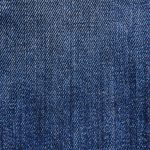When you're working with batiste for embroidery, you need to consider several key factors to ensure your project turns out beautifully. Choosing the right weight and softness of the fabric is just the beginning; proper preparation, including washing and ironing, sets the stage for success. Additionally, using the right stabilizer and stitching techniques is crucial for maintaining the delicate nature of batiste. As you think about these elements, it raises an important question: what specific practices will help you achieve the best results?
Table of Contents
Choosing the Right Batiste
When selecting batiste for your embroidery projects, consider its weight, softness, and the thread count to ensure it meets your specific needs. Batiste is available in various weights, typically ranging from lightweight to medium. A lighter weight is ideal for delicate designs, while a medium weight can provide more stability for intricate stitches.
Next, think about softness. Softer batiste feels luxurious against the skin and drapes beautifully, making it perfect for garments or home décor items. If you're working on something that requires a bit more structure, opt for a slightly stiffer option.
The thread count is another crucial factor. Higher thread counts usually indicate better quality, resulting in a smoother surface for your embroidery. This can make a significant difference in the final appearance of your work.
Lastly, don't forget to consider the color and finish of the batiste. A subtle sheen can enhance your embroidery, while a matte finish may provide a more understated elegance. By paying attention to these details, you'll choose the right batiste that elevates your embroidery projects and ensures a satisfying crafting experience.
Preparing Your Fabric
Before you dive into your embroidery project, make sure to prep your batiste properly for the best results. Start by washing your fabric to remove any sizing or chemicals that could interfere with your embroidery. Gently hand wash or use a delicate cycle, and let it air dry to maintain the fabric's quality. Once it's dry, iron it to smooth out any wrinkles, ensuring you use a low heat setting to avoid damaging the delicate fibers.
Next, you'll want to cut your batiste to the desired size, allowing a bit of extra margin for hooping. This way, you'll have enough fabric to work with while keeping your design centered.
Here's a quick reference table for your fabric preparation:
| Step | Description | Tips |
|---|---|---|
| Wash | Remove sizing and chemicals | Use delicate cycle |
| Dry | Air dry to maintain quality | Avoid direct sunlight |
| Iron | Smooth out wrinkles | Low heat setting |
| Cut | Trim to desired size | Leave extra margin |
Stabilizer Options for Batiste
Choosing the right stabilizer for batiste is key to achieving clean, crisp embroidery results. Since batiste is lightweight and delicate, it's essential to select a stabilizer that supports the fabric without adding bulk or stiffness.
For most batiste projects, a lightweight tear-away stabilizer works well, as it provides the necessary support during stitching and can be easily removed afterward.
If you're working on intricate designs or using a lot of thread, consider using a cut-away stabilizer. It offers more stability and prevents the fabric from distorting, especially if the embroidery is dense.
Another option is a water-soluble stabilizer, which is ideal for delicate details and can be rinsed away after you've finished stitching, leaving no trace behind.
When embroidering on batiste, make sure to avoid heavy stabilizers that can weigh down the fabric or disrupt its lightweight nature.
Always test your stabilizer choice on a scrap piece of batiste to ensure compatibility. This way, you'll achieve the best results for your embroidery project while preserving the soft, airy feel of the fabric.
Stitching Techniques to Consider
Several effective stitching techniques can enhance the beauty and precision of your embroidery on batiste. By incorporating these methods, you'll not only improve your results but also enjoy the process more.
- Use a Fine Needle: Opt for a sharp, fine needle, like a size 60/8 or 70/10. This helps prevent damage to the delicate fabric.
- Choose Lightweight Threads: Select lightweight threads that complement batiste, such as cotton or silk, to maintain the fabric's airy feel.
- Experiment with Stitch Types: Consider using various stitch types like satin, backstitch, or French knots. Mixing techniques can add visual interest and texture to your work.
- Practice Consistent Tension: Keep your thread tension consistent for even stitches. This is crucial, as uneven tension can lead to puckering, which is especially noticeable on lightweight fabrics like batiste.
Caring for Batiste Embroidery
Caring for your batiste embroidery requires gentle handling to preserve its delicate beauty and intricate designs.
Start by washing it carefully. Use cold water and a mild detergent to avoid damaging the fabric. Never wring or twist your batiste; instead, gently press the water out. For best results, consider hand washing, as this minimizes agitation.
When it's time to dry, lay your embroidered piece flat on a clean, dry towel. Avoid direct sunlight or heat sources, as they can fade colors and weaken fibers. Once dry, store your batiste embroidery in a cool, dry place, away from direct light and moisture to prevent yellowing or mildew.
If you need to iron your piece, do it while it's still slightly damp. Use a low heat setting and place a cloth between the iron and the batiste to prevent scorching. Always iron the reverse side to protect the embroidery.
Frequently Asked Questions
Can I Use Batiste for Quilting Projects?
You can use batiste for quilting projects, but keep in mind it's lightweight and may not provide the stability traditional quilting fabrics offer. Consider layering it with sturdier materials for better structure and durability.
How Do I Store Leftover Batiste Fabric?
To store leftover batiste fabric, fold it neatly and place it in a breathable fabric bag or a drawer. Avoid plastic bags to prevent moisture buildup, ensuring your fabric stays fresh and ready for future projects.
What Needle Size Is Best for Batiste?
For batiste, you'll want to use a size 60/8 or 70/10 needle. These smaller needles create less fabric distortion, ensuring your delicate fabric remains smooth and your stitches maintain precision throughout your embroidery project.
Is Batiste Available in Different Colors?
Yes, batiste is available in a variety of colors. You'll find it in pastel shades, vibrant hues, and even printed designs, allowing you to choose the perfect fabric for your project.
Can I Dye Batiste Fabric Before Embroidery?
Yes, you can dye batiste fabric before embroidery. Just make sure to use a dye suitable for the fabric type, and follow the instructions carefully to achieve your desired color without compromising the fabric's quality.
- How Does Ring Spun Cotton Affect Garment Fit and Shape Retention? - August 13, 2024
- What Are the Challenges in Producing Ring Spun Cotton? - August 13, 2024
- Is Ring Spun Cotton Suitable for Plus-Size Clothing? - August 13, 2024







